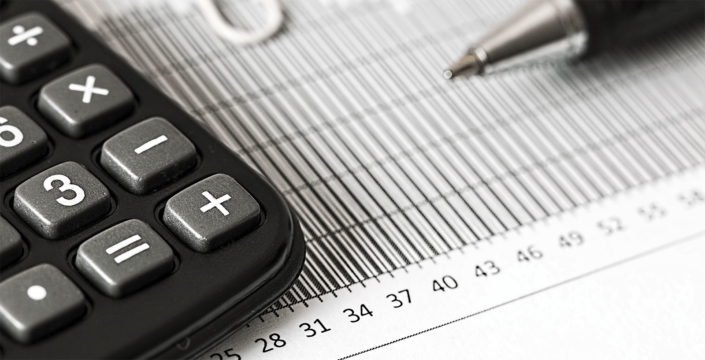Blog | All Posts | All Topics
Small Business Income Tax Offset Guide
Small businesses are always looking for ways to reduce their tax bills, whether it’s through tax offsets or deductions. But did you know that you may be eligible for a Small Business Income Tax Offset? The Australian government offers it to help qualified businesses with their taxes.
If you are eligible, you’ll receive a rebate of up to $1,000. The Australian Taxation Office (ATO) calculates the offset based on the part of your business income subject to taxes. It’s important to note that there is a turnover threshold limit.
This comprehensive guide will provide the answers to questions you may have about tax offsets, tax deductions, and more.
What Is a Tax Offset?
A tax offset is a discount on the amount of taxes you owe. The amount of taxes you pay gets reduced by the amount of your rebate. So, if you owe $1,000 in taxes and have a $200 offset, you only pay $800 in taxes.
It could reduce your payable income tax to zero. There are two types of offsets: refundable and non-refundable.
- Refundable offsets: can be used to reduce the amount of tax you owe to zero, and if you have a balance of rebate left over, you will receive a refund for the amount.
- Non-refundable offsets: can only be used to reduce the amount of tax you owe—they cannot give you a refund.
The amount of rebate you receive depends on individual circumstances. However, the ATO notes that most are non-refundable.
What Is a Small Business Income Tax Offset?
The Small Business Income Tax Offset is an offset available to unincorporated small businesses in Australia. The rebate is available for the business’s taxable income. The ATO caps it at $1,000 per annum.
The offset helps small businesses with their tax liability and encourages entrepreneurship and growth. To be eligible for the compensation, companies must have an annual turnover of less than $5 million.
The Small Business Income Tax Offset is one of several offsets that are available to small businesses in Australia. Other offsets include the Small Business Capital Gains Tax Concessions and the Small Business CGT Exemption.
Small Business Income Tax Offset vs. Tax Deduction
One way to reduce your tax bill is by taking advantage of tax offsets and deductions. What is the difference between a tax offset vs. a tax deduction?
A tax offset is a reduction in the amount you owe after taxes. If you owe $10,000 in taxes but have a $1,000 rebate, you will only owe $9,000 in taxes.
A tax deduction, on the other hand, reduces the amount of income before taxes. So, if you have $100,000 in taxable income but you can deduct $10,000 in business expenses (excluding personal costs), then only $90,000 of your payment will be taxed.
Business expenses may include:
- Employee salaries
- Marketing expenses
- Financing expenses
Who Is Eligible for a Small Business Tax Offset?
The offset is strictly available to individuals who operate a small business as a sole proprietor or have a portion of the net small business revenue from a partnership or trust distribution. Foreign residents qualify if they meet the requirements—as well as foreign businesses of Australian residents.
From the 2021–22 income year forward, individuals must have an overall turnover of less than $5 million. If you meet these criteria, you may be eligible for a Small Business Income Tax Offset with a rate of up to 16% offset.
Eligibility requirements are:
- Less than $5 million annual turnover in the 2022–23 financial year
- A due lodgment date of no later than 31 October 2023 for the 2022–23 financial year
- Must be an individual obtaining a small business organisation income (unincorporated entity)
Who Is Not Eligible?
If you do not meet the above criteria, you will not be eligible for the Small Business Income Tax Offset.
The following are not eligible:
- Incorporated companies
- Corporate unit trusts, public trading trusts
- Individuals with an annual turnover of more than $5 million
- Any individual with a business controlled by another entity or person
- Businesses that are part of a group of entities with a combined turnover of more than $5 million
How Is the Tax Offset Calculated?
The ATO calculates the offsets based on the Small Business Income Tax Offset rates and thresholds that apply for the relevant financial year. As mentioned, the ATO calculates the rebate using a 16% rate of offset. The ATO also uses a business’s tax return data to calculate the offset amount.
The balance then gets sent to you as a line item on the notice of assessment. But if you are math savvy, you can estimate your rebate.
Example:
Oliver is a sole proprietor. He has a $50,000 taxable income and a $12,500 tax burden for the 2022–2023 income year. His total assessable income from his firm is $25,000.
Oliver must first determine what proportion of his taxable income is attributable to his firm (taxable income divided by total net small business income):
- $25,000 / $50,000 = .05 (50%)
Oliver’s business accounts for half of his taxable income. Oliver then applies this to calculate how much of his entire net revenue is attributable to his tax liability:
- $12,500 x 0.5 = $6,250
He calculates his rebate from the small business he owns using the small business offset rate (16%):
- $6,250 x 0.16 = $1000
Oliver’s final offset is the maximum cap limit of $1000. It’s important to note that the offset is non-refundable, so any excess it generates above a person’s tax burden is forfeited. If the final rebate had been $3,000, it would decrease to the limit of $1,000. You can use the offset calculator to determine what to enter on your return.
What Is a Tax Offset Calculator?
The ATO Small Business Income Tax Offset calculator helps you figure out the amount you must provide in the field labelled “Net small business income” on your return. However, this calculator will not determine your offset amount—as specified above. The ATO is in charge of this.
How Do You Claim Your Small Business Tax Offset?
Your business can claim the Small Business Tax Income Offset if you meet all eligibility requirements by filing a tax return for the relevant year. You don’t need to submit a form.
Final Take
Do you still have questions about what is a tax offset? If you want to know more about tax offsets or any other aspect of your business’s taxes, it’s best to speak to an accountant or tax professional. They will be able to give you tailored advice that considers your circumstances.
Visory’s bookkeeping service can help you prepare for tax time and take advantage of small business income tax offsets and deductions. Our marketplace of finance experts can take accounts payable, accounts receivable, payroll, reporting, and more off your hands. You can book a meeting with the Visory team to learn more about our services here.







